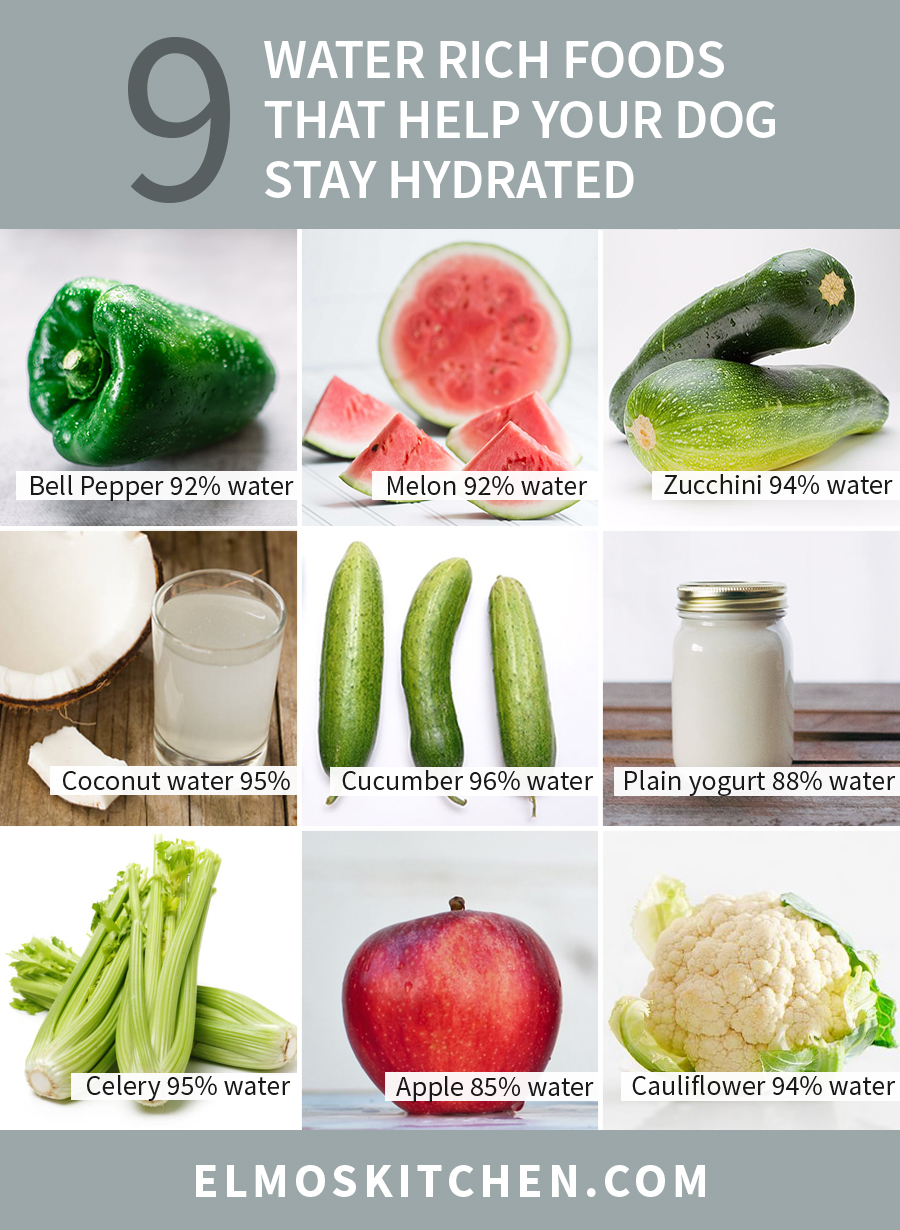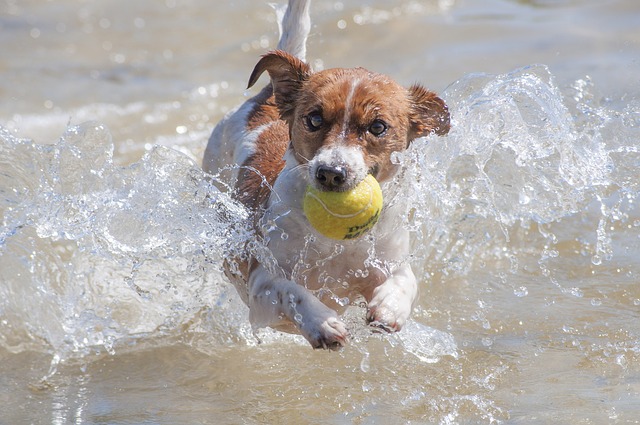Blog, General dog nutrition
Tips for a healthy dog during the summer months
Summer is here! A time for BBQs, outdoor fun and games, ice-cream, and long, lazy evenings.
During these warmer months, it’s important to look after your dog’s health.
Here’s a few tips on how to keep your dog happy and heathy over the summer months, while still allowing them to have a good time.
1. Keep hydrated & stay cool
One of the simplest things you can do to help your dog stay healthy in the summer is to provide them with as much water as possible and to keep them cool.
It might sound simple, but don’t underestimate the power of giving your dog lots and lots of H2O.
Keeping your dog hydrated during the hot months will help avoid heatstroke, fatigue, dizziness, fainting as well as helping to prevent against the more serious effects of dehydration, including kidney and other organ failure.
Carry a water bowl when out and about. Place water bowls in several locations in the house and garden. Make the water easily accessible. If you have a senior dog maybe it hurts for them to bend down and grab a drink. An elevated bowl might be more comfortable for them.
Btw, did you know that dogs drink by curling their tongues backward to form a scoop with which to lap up water. Here is Melo demonstrating this very well.
Mix up how you give your dog enough water during the summer months. As well as simply providing constant access to a clean, fresh bowl of water, consider giving ice chips, homemade frozen lollies, frozen fruits and even frozen broth cubes!
It’s equally important that you don’t let your dog drink from a swimming pool or the ocean. The chlorine in swimming pools can damage your dog internally, while the salt in the ocean will only serve to exacerbate your dog’s thirst, rather than quench it.
During summer, it’s also important to keep your dog cool from the outside. Consider having a paddling pool, sprinklers or water mists in your garden; in your dog’s bed, ice packs, a cooling mat or towel and a fan nearby. For them to play with, cool toy and for when you’re walking them, a cooling coat.
While it’s not necessarily to have all of these things, it’s worth considering investing in at least a few so that your dog is not only comfortable, but also safe and healthy during the hot summer months.
2. Feed seasonal fruits & vegetables
Summer brings with it a whole new batch of seasonal fruits and vegetables.
A lot of these fruit and veg can have a positive effect on your dog’s health when included in their diet. For example, watermelon and cucumber are hydration heroes, meaning as well as providing other nutrients, these foods have a high-water content and can help keep your dog hydrated.
Vary how you feed your dog these foods over summer. For example, you could make a fruit smoothie which you then freeze and give to your dog as a fruit lolly. Or you could make a fun summer popsicle.
3. Watch out for heatstroke
When your dog becomes too hot, there’s a danger of them suffering from heatstroke. This can lead to several medical complications, including death.
Signs of heatstroke include:
- Excessive panting
- Loss of energy and wobbly legs
- Less responsive
- Excessive drooling
- Dry, bright red or purple gums
- Vomiting
- Diarrhoea
Certain dogs can be more susceptible to heatstroke than others. For example, short-nosed breeds including pugs and boxers, dark coloured and/or long haired dogs, older dogs and dogs that are overweight can get heatstroke more easily, and not necessarily in only very high temperatures.
If you notice any of these signs of heatstroke in your dog, immediately find shade, give them water, cool them down (e.g. by wetting their coat, putting a cool towel on them etc.) and contact your vet.
4. Parasites – oh my!
During the summer months, many different types of parasites such as ticks, worms and fleas are at their peak as the warm weather encourages their growth.
When it comes to parasites, prevention is the key. So make sure your dog (and all pets in your home) is protected.
There are various ways to prevent your dog developing these creepy crawlers, and each should be treated in a slightly different way. The best thing to do is to speak to your vet and discuss the options that are best for your dog and the lifestyle they lead
5. Provide shade
It’s important to make sure that your dog has access to shade at all times during the summer months. This can help them avoid developing heatstroke, getting sunburned or becoming dehydrated.
Shade can be provided in a variety of ways – from parasols and trees coverings, to hats and keeping them indoors.
Never leave your dog in the car at any time, especially in the summer. It’s not enough to simply leave a window down and give them a bowl of water. It takes only 10 minutes for the inside of your car to reach a temperature that can be fatal.
6. Keep safe around barbeques & picnics
Dogs love to scavenge and ingest things they shouldn’t. Some dogs will eat anything that meat juices and condiments may have dripped on to. This includes, foil, leftovers, bones, meat skewers, sticks and rocks! These can be ingested and cause intestinal injury and obstruction.
Corn on the cob, peach pits, ribs, chicken wings or other cooked bones can cause a partial or complete intestinal obstruction.
High fat foods can be hard for your dog to resist but they can cause inflammation of the pancreas, which can be fatal or have long-term consequences.
Avocado seeds and skin contain a toxin called persin. Whether or not the flesh itself is harmful is being debated but since some cases have cropped up I wouldn’t take the risk.
Other foods to avoid include, chocolate, xylitol, grapes and raisins, onions, garlic and leeks.
7. Simple summer snacks to share.
While there are certain foods to avoid at all cost, there are plenty of simple summer foods you can share with your dog.
A plain bit of grilled meat or fish (off the bone please) or vegetables will be a welcome treat.
Eggs travel well, making them the ideal picnic food.
A small serving of Frankfurter is okay too. Cut them up into pieces and dispensing them like treats.
Other simple summer snacks include raw, cut-up vegetables and fruits like carrots, cauliflower, apple, blueberries and bell peppers.

If you enjoyed reading this, you may also enjoy some of our other blogs.
Please feel free to share by using the super easy share buttons below.

